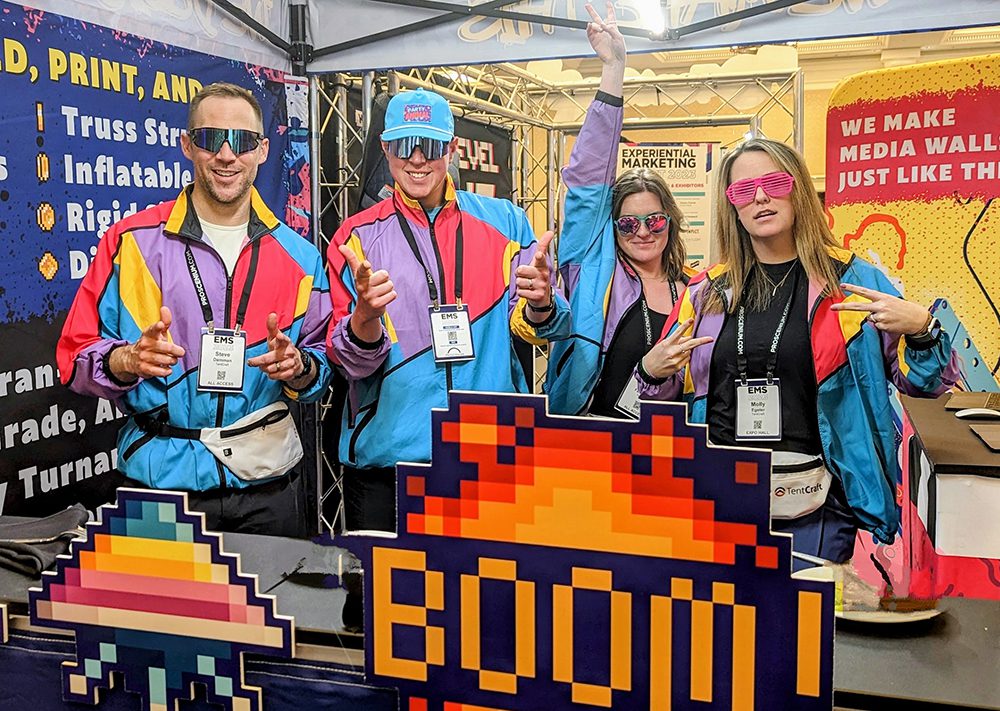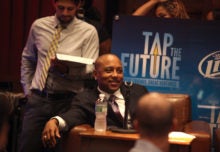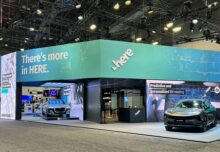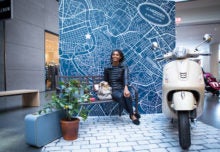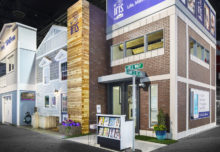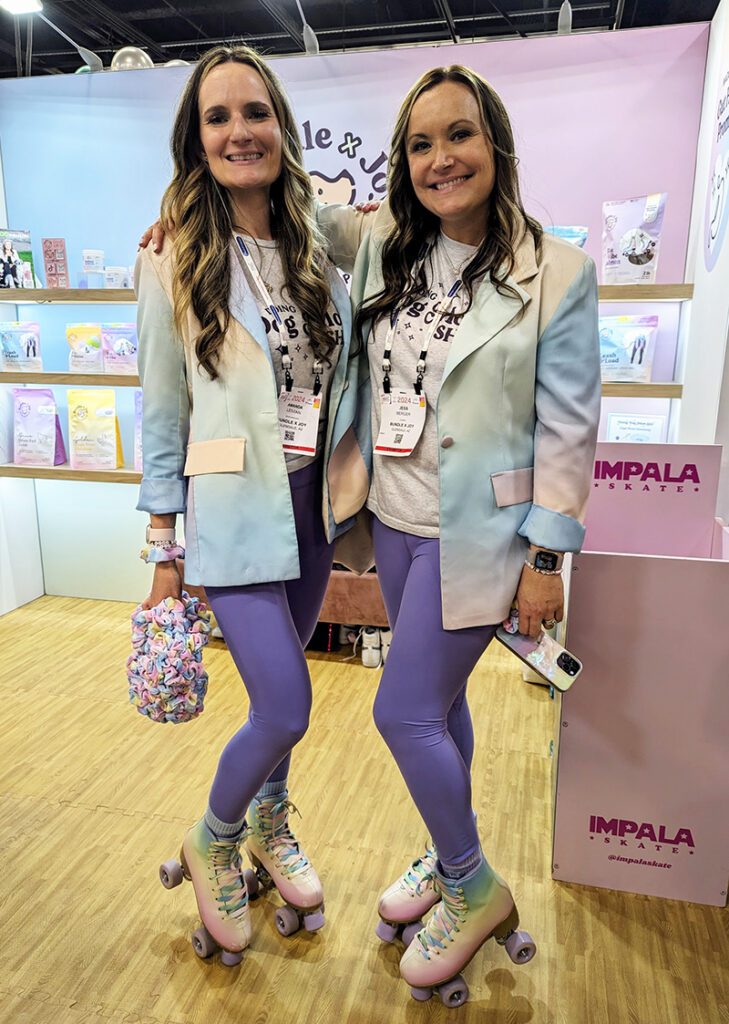
Bundle X Joy booth staff at Natural Food Expo West.
Can’t decide what your team should wear to a trade show? How about roller skates?
At Natural Food Expo West, pet food and lifestyle brand Bundle X Joy drew a crowd to its 10×10 booth where staffers were decked in on-brand pearlescent outfits, complete with custom blazers, hair scrunchies and roller skates from Impala Skates. The color scheme mimicked the brand’s packaging, and the thought process behind the attire choices represented its personality and its mission to bring joy and excitement to pet parents.
TentCraft made a splash with its ’80s-themed booth at the Experiential Marketing Summit, pumping the vibe with colorful outfits and glasses that screamed impactful design.
At the recent World of Concrete construction expo, Bosch Power Tools invited attendees to get hands-on with the latest equipment at a sprawling outdoor activation. Booth staff and experts leading the demos sported Bosch-branded vests—appropriate for the unpredictable weather—over navy-blue tops and also neck scarves with the “The More You Bosch, The More You Feel Like a Bosch” campaign for an on-brand look that also felt comfortable and professional.
While some brands successfully lean into their core mission and established aesthetic for making choices about trade show attire, for many companies exhibiting at trade shows, it’s an ongoing struggle. Just ask Reddit, full of discussions about establishing attire guidelines, getting buy-in from opinionated management and co-workers who label dress codes as “sexist” and tying it to event ROI.
Opinions range widely from asking the team to “dress nicely,” which typically includes black slacks and a branded top, requesting “business attire,” offering branded accessories, such as ties and scarves, and even allowing team members to buy their own shirts and get them branded. Ordering male and female versions of the same branded apparel seems to be a popular option. Comfort is also a top consideration.
“I lean into wearing pieces that boost my confidence rather than pieces in which I feel or look uncomfortable. For example, I exclusively wear flats because I look like a newborn gazelle trying to walk in heels,” shares a Reddit user kouridge.
Start with Research
“Booth attire can be a bit of a balancing act for exhibitors,” says trade show exhibiting expert Robyn Davis, founder of Exhibitors WINH LLC. “It’s important for leadership to ensure their brand is represented appropriately and, again, to keep the potential value of attire as a strategic tool top of mind, but also important for team members to feel confident in what they’re wearing so their clothes don’t distract them from their work.”
Davis suggests taking the time to consider how the attire can help achieve trade show goals instead of rushing through the decision or simply defaulting to the usual scenario of years past. Will the team need to be easily recognizable in a busy booth or feel approachable in a smaller booth? Will they be attending receptions and events where they’d want to get noticed or only staying in their booth where their company affiliation should be more obvious to attendees? Do exhibitors want their brand to feel more traditional or modern, more formal or casual—which “vibe” will complement their event-specific design elements best? What about practical aspects, such as facilitating demos, temperature concerns, or the necessity to be “camera ready”?
Since the pandemic, many trade shows are trending towards more casual attire, such as nice jeans and a branded polo, rather than suits and even khakis and button-down shirts, she says.
“To ensure alignment with team preferences, we often conduct internal surveys to gather input on favored brands and styles,” says Reina Herschdorfer, director-marketing for national meetings & events at Caesars Entertainment. “This collaborative approach helps us narrow down options and make selections that resonate with our team.”
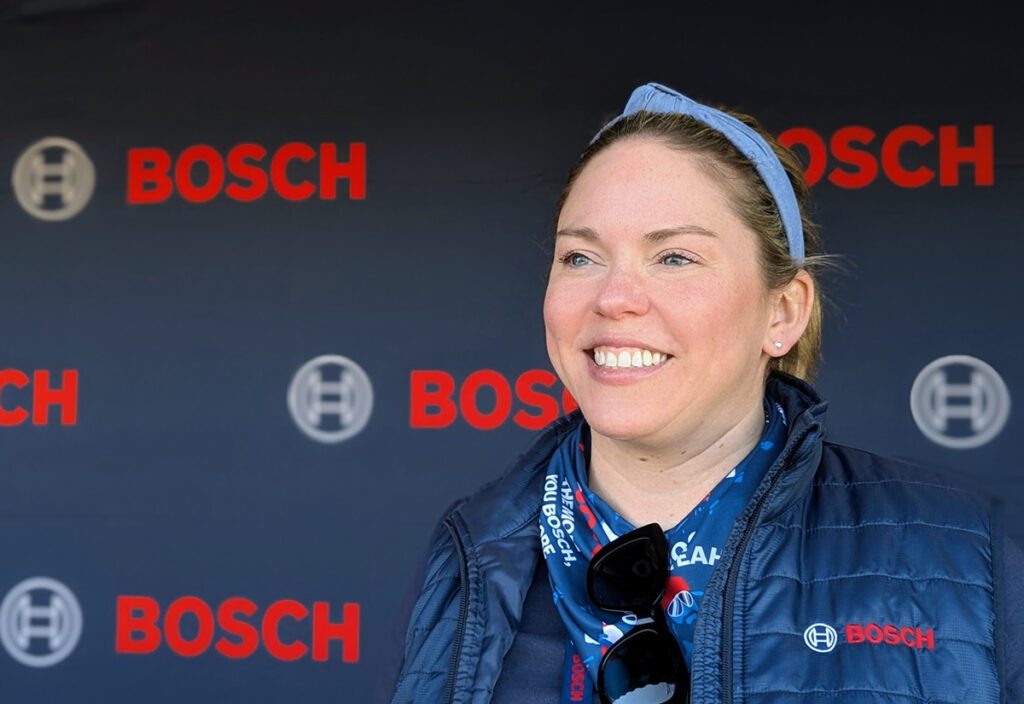
At World of Concrete construction expo, Bosch Power Tools staff and experts leading the demos sported Bosch-branded vests.
Iron Out the Details
There are several important factors to consider in the design process, including the choice between a printed or embroidered logo, selecting appropriate logo colors (monochrome, white, grey, or full color), and determining optimal logo placement, Herschdorfer says. For a recent event, the company wanted to provide a comfortable hoodie that also made a strong visual statement, so the choice was made for a bold, front-facing logo to ensure brand visibility in event photography, which was later leveraged for p.r. The outcome was highly effective.
The hoodie was so popular among the team members that the company reordered it for a subsequent event, this time opting for a more understated approach with a discrete embroidered logo on the upper arm for a more refined and elegant alternative.
Ensure a Perfect Fit
Both Herschdorfer and Davis agree on the importance of building in time for adjustments. “Whenever possible, we recommend requesting samples in advance,” Herschdorfer says. “Evaluating the fabric and construction firsthand is essential, as products can appear appealing online but may not meet expectations in person.”
Davis notes that a dress rehearsal is a smart idea, ideally while there’s still enough time to make changes, especially in case of sizing or other avoidable issues.
And as for statement sneakers that have taken the events industry by storm? Let us attest that ONs are still our favorite choice for putting in miles around the show floor. But as far as bold statements, refer to the point about goals. Because sometimes, black and comfortable is just fine.
Photo credit: Anna Huddleston


